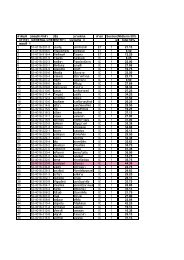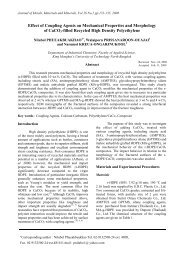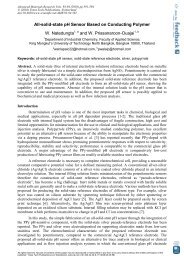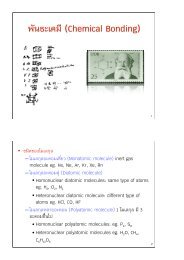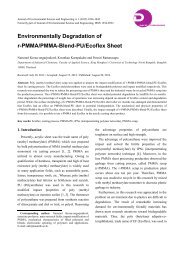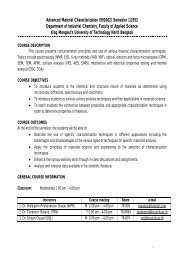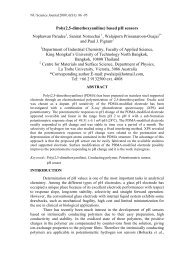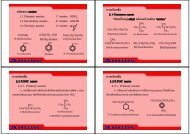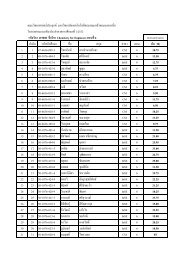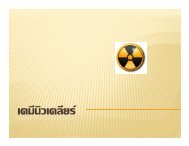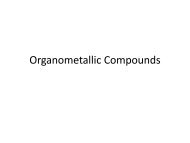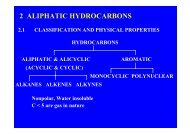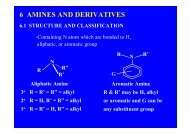Chapter 2. POLAR ADDITION AND ELIMINATION REACTIONS
Chapter 2. POLAR ADDITION AND ELIMINATION REACTIONS
Chapter 2. POLAR ADDITION AND ELIMINATION REACTIONS
Create successful ePaper yourself
Turn your PDF publications into a flip-book with our unique Google optimized e-Paper software.
(1) Simple alkenes and water are not mutually soluble, except in very concentrated<br />
acids.<br />
(2) The spectral features of simple alkenes do not allow for very convenient<br />
methods of following reaction rates, absorption in UV below 200 nm.<br />
For this reason, most studies have been done with conjugated alkenes<br />
particularly styrenes.<br />
slow<br />
H + + -H +<br />
PhCH=CD 2 PhCHCD 2 H PhCH=CHD<br />
H 2 O , fast<br />
PhCH-CD 2 H<br />
OH<br />
This mechanism is correspond well with, i.e. rate to reaction increases with<br />
electron-releasing substituents. A substantial solvent isotope effect k H2O /k D2O = 2-4 is<br />
observed.<br />
<strong>2.</strong>3 <strong>ADDITION</strong> OF HALOGENS<br />
C=C + X 2 —C—C—<br />
X X<br />
-Is the reaction concerted ?<br />
-Is there a discrete positively charged intermediate, carbocation or a cyclic<br />
halonium ion?<br />
For brominations, anti addition is preferred for simple alkenes, for conjugated<br />
alkenes with aryl groups, the extent of syn addition becomes dominant pathway.<br />
Chlorination is not so stereoselective as bromination, but tends to follow the same pattern<br />
in a lesser extend.<br />
Br - Br + Br - Br<br />
Br<br />
syn<br />
Br<br />
C C C—C C C<br />
+<br />
anti<br />
The existence of halonium ion<br />
CH 3 CHCH 2 Br<br />
SbF 5 /SO 2<br />
CH 3 CH—CH 2<br />
-60 o C<br />
-<br />
SbF 6<br />
F<br />
Br<br />
+<br />
Associate Prof. Surin Laosooksathit, Ph.D. 5/31/2009 3



